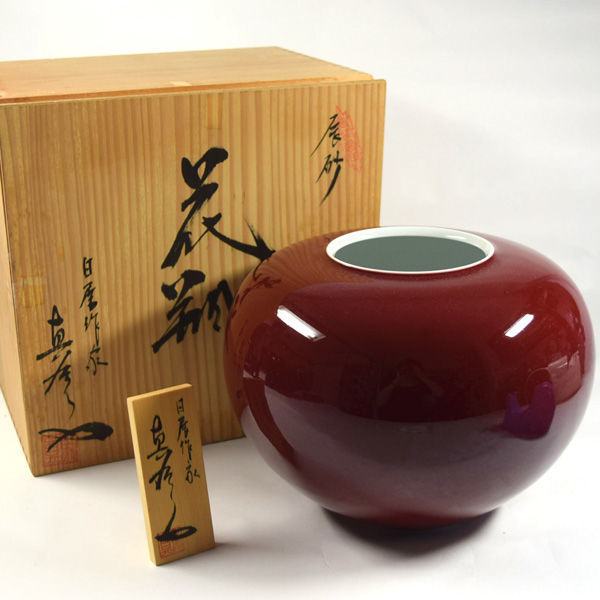【2259】ガス圧式跳ね上げ収納ベッド[夕月][ユフヅキ]薄型プレミアムボンネルコイルマットレス付き SD[セミダブル][ラージ](5
(税込) 送料込み
商品の説明
商品説明
46360円【2259】ガス圧式跳ね上げ収納ベッド[夕月][ユフヅキ]薄型プレミアムボンネルコイルマットレス付き SD[セミダブル][ラージ](5住まい、インテリア家具、インテリア
※ 配送不可地域のお知らせ ※
一部商品で配送不可地域がございます。該当されると思われる方はお手数ですが郵便番号を明記の上、事前に必ずお問い合わせをお願い致します。未確認でのキャンセルは、落札者都合での落札取り消しとなりますので、ご注意をお願い致します。配送不可地域の情報は下記よりダウンロードしてご確認頂けます。
※配送不可地域一覧はこちら!※
※ 【 お客様へ大切なお願いがございます。 】 納期確認のご協力をお願い致します
※
品物は予約商品となります。納期は基本的に約3~4営業日後の出荷予定となりますが【数週間~数ヶ月】のお時間が掛かる場合もございますので、ご都合によりお待ち頂けない場合はご注文前に必ず【納期のお問い合わせ】をお願い致します。納期未確認でのキャンセルは、落札者都合での落札取り消しとなりますので、ご注意をお願い致します。
納期等のお問い合わせは、下記メールまでお願い致します。
myckys@eternity.co.jp
品物は常に欠品しない様に努めておりますが、状況により欠品中の場合がございます。その場合の納期は数週間のお時間が掛かる場合もございますので、ご都合によりお待ち頂けない場合やお急ぎの場合は入札前に必ず在庫確認及び納期のお問い合わせをお願い申し上げます。
商品名・詳細 ガス圧式跳ね上げ収納ベッド[夕月][ユフヅキ][ラージ]
【薄型プレミアムボンネルコイルマットレス付き】セミダブル
※ 各商品の詳細は同シリーズを纏めて下記へ記載致しておりますので、ご覧頂いている
ページのタイトルにある対象商品の詳細をご確認頂けます様にお願い申し上げます。※
お支払い方法
代金のお支払い方法はヤフー決済もしくは銀行振込がご利用頂けます。また、代引きはご利用頂けません。お支払期日は在庫変動の影響を防ぐ為に2日以内にお願い致します。ご理解をお願い申し上げます。
価格は税込みです。お支払い総額は商品代金(税込)+送料のみとなります。
送料のご案内
でお届け致します。
北海道、沖縄及び離島へは別途追加費用が掛かります。その場合は、実費請求とさせて頂いておりますが、ご理解を頂けます様にお願い申し上げます。追加送料はお問い合わせをお願い致します。
※ 離島など、一部の地域は配送不可の場合がございます。 ※
※ 配送不可地域一覧はこちら! ※
配送不可地域各当の方は、他の提案が出来る場合もございますのでお問い合わせをお願い致します。
【 安心完全保障確約 】
当社は配送事故や初期不良に関して、全て完全保障です。保障が一切無かった、一部のみしか保障されなかった等の話を良く聞きますが、ご安心ください。詳しくは下記、不良対応のご案内をご確認頂けます様にお願い致します。
【 今後の送料について 】
世界的なコンテナ不足、原材料の安により送料値上げの通達をメーカーから受けており、今後も段階的に送料の値上げがございます。送料の値上げは避けられない為に、可能な限り商品価格を下げておりますので、ご理解を頂けます様にお願い申し上げます。
お届け期間について
通常、品物はご注文から出荷まで3~4営業日ほどお時間が掛かります。配送日時指定ご希望の場合は、ご希望の日程に合わせて出荷日を調整させて頂きます。ただし、ご希望日直前のご要望はお受けできませんので余裕を持ってご指定頂けます様にお願い致します。
また、品物が欠品中の場合は数週間~数カ月のお時間が掛かる場合がございますので、お待ち頂けない場合は、必ずご注文前にご希望の色を明記の上、納期のお問い合わせをお願い申し上げます。お楽しみにお待ちのところ誠に申し訳ございませんが予めご了承頂けますようお願い致します。
在庫確認のご案内
※ 事前に納期の確認を必ずお願い致します!! ※
納期は基本的に約3~4営業日後の出荷予定となりますが【 数週間~数ヶ月 】のお時間が掛かる場合もございますので、ご都合によりお待ち頂けない場合はご注文前に必ず【納期のお問い合わせ】をお願い致します。納期未確認でのキャンセルは、落札者都合での落札取り消しとなりますので、ご注意をお願い致します。
お客様にはご都合がある事を重々承知致しているからこそ、事前に在庫及び納期の確認をお願い致しております。大型商品は普段ご利用されている宅配便とは異なり在庫の有る品物でも出荷まで3~4営業日、配送は出荷日から地域により数日掛かります。また、当方で全国の運送会社や各配送所の事情や状況までは把握する事はできず、時にはお客様のご希望通りにならない場合もございます。
万が一の不良対応を含めまして、お客様へは当社で購入して良かったと思って頂けるように誠心誠意務めさせて頂いておりますので、ご注文後にトラブルとならない為にも事前に納期の確認をお願い致します。
納期等のお問い合わせは、下記までお願い致します。
myckys@eternity.co.jp
ご注文時のご注意
※ 説明内に完成品と記載が無い限り品物はお客様組立品です。
組立設置サービスは別途有料でご用意がございます。※
色やオプションの指定はご注文後の連絡時にお願い申し上げます。ご注文の確定は、ご希望の色及び送り先のご連絡及びご決済を頂いた時点で受付完了とさせて頂いております。
当ショップはストアです。個人IDオークションと異なり、お客様の個人情報は自動で取得できません。その為に、お客様に送り先とご希望の色をお教え頂かないと、出荷準備を進める事ができませんので、ご注意をお願い頂けます様にお願い致します。ご入金及びご連絡を頂くまでに在庫状況が変る場合もございますので、お早めにご対応を頂けます様にお願い申し上げます。また、色の指定がないなど頂く情報が不十分な場合も受け付け完了となりませんので合わせましてご注意をお願い致します。
不良品対応のご案内
品物はメーカーにて厳重に検品を受けた後に梱包をされておりますが、配送事故を含め傷や破損、部材の不足などの不良があった場合は新しい品物と交換をさせて頂きますので、到着後は可能な限りお早めに開封頂きまして品物のご確認をお願い申し上げます。在庫状況により交換までお時間を必要となる場合もございますが、ご満足頂ける様に最後まで対応させて頂いておりますので、ご理解をお願い申し上げます。
万が一、不良等があった場合は、不良個所の写真をオークションに記載のメールアドレスまで添付の上、出来る限り詳しい状況と不良個所の記載をお願い致します。配送事故等の可能性がある場合は、梱包の外装に破損等が無いかなどのご確認もよろしくお願い致します。また、到着から1週間以上経過後の不良報告はお受け出来ない場合がございますので、合わせましてご注意をお願い致します。
評価について
この様なご案内を記載する事自体本当に残念ですが、極一部のお客様で全く説明や確認をせずに批判される方や、事実と異なる虚偽の批判をする方がおり大変残念な思いをする事がございます。年間に何百人とお相手をしていると数名はこの様な方に当たり運が悪かったと諦めるしかありません。
評価をご覧になり疑問に思われた方は、ご面倒かと思いますがお気軽に質問を頂けましたら包み隠さず事の経緯をご説明させていただきます。当社で購入して良かったと思って頂けるように誠心誠意務めさせて頂いておりますので、疑問や不安を残さない為にも何かございましたらお気軽にお問い合わせを頂けます様にお願い申し上げます。
搬入時のご注意
※ 搬入不可によりキャンセルの場合や搬入困難の為に別途運賃が発生する場合の
送料等はお客様負担となりますので、事前に搬入可能かご確認をお願い致します※
Myshop-Mycky.com since 2007.june
〒116-0013 東京都荒川区西日暮里3‐15‐14 1F
インテリア事業部 TEL:03‐5814‐5026Produce by Eternity (有)エタニティー 代表 桑原 靖典
商品の情報
カテゴリー
配送料の負担
送料込み(出品者負担)配送の方法
ゆうゆうメルカリ便発送元の地域
宮城県発送までの日数
1~2日で発送メルカリ安心への取り組み
お金は事務局に支払われ、評価後に振り込まれます
出品者
スピード発送
この出品者は平均24時間以内に発送しています















